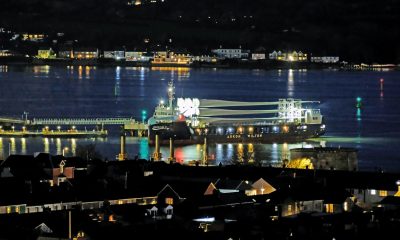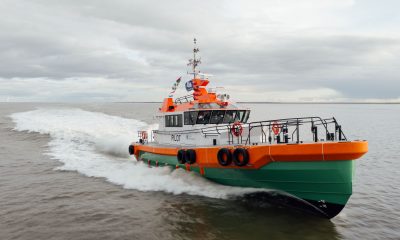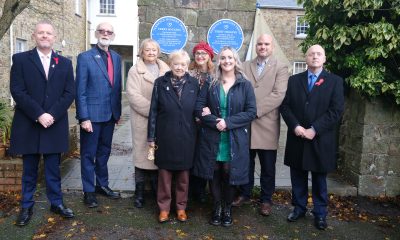News
Make cancer facilities available for locals

 CANCER can be one of the most devastating illnesses in the modern world. Writing as the husband of a wonderful young woman who was recently a victim of cancer, this freelancer knows first-hand the pain, destruction, anguish, loss, loneliness, helplessness and fears that cancer brings with it. As The Herald recently detailed, local charity Adam’s Bucketful of Hope is campaigning for a Cancer Day Unit to be installed in Withybush Hospital and thus provide local residents with nearby cancer facilities – a campaign The Herald itself is staunchly backing. Having had to face the battle against cancer head-on when my wife was diagnosed, I realise the importance of what they are campaigning for. Life with cancer is a life of appointments, time-frames and regimes; basically a life of routines – and having professional support and guidance in these kinds of scenarios is invaluable. And all aspects of the process come under this same umbrella of professional guidance and support; doctors, nurses, wards, beds, drugs, treatment facilities etc. these are all vital components in the fight against cancer. These days it is easy to have an apathetic attitude towards cancer and attribute it to being an illness that tends to only afflict the older generations in the twilight of their lives. My wife was 24 years young when she lost her battle. Cancer doesn’t care what age you are, where you come from, what your lifestyle is, it can affect anyone, at any time, of any age. Period. From rudimental experience I can honestly profess that were it not for the cancer services and facilities near to home whilst my wife was unwell, I seriously don’t think I could have coped. There is no manual, no ‘Idiot’s Guide’, no training seminars you can attend to make you an expert in dealing with this sort of thing. It’s different for everyone. It’s always different. But it is important to provide patients, as well as those on the periphery, with as much support as possible. Chemotherapy treatments, for example, can last a number of hours; blood tests must be run to check immune systems. Additionally there is any manner of drug concoctions that patients will need to be prescribed and as such they will require facilities close by. When my wife was ill we were fortunate that the hospital was pretty close (around a 20 drive). But eventually even this became a struggle as she was almost perpetually in a great deal of pain. For patients having to travel several hours from home to their nearest facilities this is untenable and can prove extremely traumatic. My wife at one point was taking between 9-15 tablets 4 times a day. These had to be done at specific timeframes, so sorting out meal times became a very regimental process. New drugs would need to be collected regularly, usually biweekly and a lot of the time we were reliant on the hospital to prescribe the right drugs, as we sometimes struggled to keep up with the number of different pills she required. There were further challenges as her illness wore on and she became less and less mobile. Moving around became cumbersome and stairs became a big problem. Eventually she had to use a wheelchair to get around, which provided more issues and yet more cost for her, myself and her family. Money was also a big worry – I wasn’t working whilst she was ill and eventually her mother decided to stop work as well to care for her daughter. I had a bit in savings and was supplementing this with sick pay from my job, but the well soon ran dry. Luckily the cancer unit assigned us a social worker who was responsible for sorting out grants for us, checks to cover transport costs and sorting my wife’s application for benefits (as she was unable to work) to save us the hassle of having to do it ourselves. It was difficult for those around her/us too – her parents and family were incredible and we would often takes turns comforting each other, updating each other on drug regime’s and appointment times and generally just being there for one another. Cancer can be an expensive illness, for patients, their families and for the health service. This is why facilities such as these are vital in the struggle – it is beneficial to everybody and helps with practical matters, such as money, that patients and their families don’t even consider until they become issues. But the health service sectors business is saving lives and without investing the necessary money in the fight against cancer the battle is going to be very one-sided. Facilities such as the ones proposed at Withybush Hospital are imperative to giving patients a fighting chance of survival, or at the very least helping to prolong their lives somewhat. My wife’s original survival prognosis was 4-5 months, due to the support and facilities she was given she fought for 11 months, and I will always be grateful that we had that extra time together. She deserved it. All patients do.
CANCER can be one of the most devastating illnesses in the modern world. Writing as the husband of a wonderful young woman who was recently a victim of cancer, this freelancer knows first-hand the pain, destruction, anguish, loss, loneliness, helplessness and fears that cancer brings with it. As The Herald recently detailed, local charity Adam’s Bucketful of Hope is campaigning for a Cancer Day Unit to be installed in Withybush Hospital and thus provide local residents with nearby cancer facilities – a campaign The Herald itself is staunchly backing. Having had to face the battle against cancer head-on when my wife was diagnosed, I realise the importance of what they are campaigning for. Life with cancer is a life of appointments, time-frames and regimes; basically a life of routines – and having professional support and guidance in these kinds of scenarios is invaluable. And all aspects of the process come under this same umbrella of professional guidance and support; doctors, nurses, wards, beds, drugs, treatment facilities etc. these are all vital components in the fight against cancer. These days it is easy to have an apathetic attitude towards cancer and attribute it to being an illness that tends to only afflict the older generations in the twilight of their lives. My wife was 24 years young when she lost her battle. Cancer doesn’t care what age you are, where you come from, what your lifestyle is, it can affect anyone, at any time, of any age. Period. From rudimental experience I can honestly profess that were it not for the cancer services and facilities near to home whilst my wife was unwell, I seriously don’t think I could have coped. There is no manual, no ‘Idiot’s Guide’, no training seminars you can attend to make you an expert in dealing with this sort of thing. It’s different for everyone. It’s always different. But it is important to provide patients, as well as those on the periphery, with as much support as possible. Chemotherapy treatments, for example, can last a number of hours; blood tests must be run to check immune systems. Additionally there is any manner of drug concoctions that patients will need to be prescribed and as such they will require facilities close by. When my wife was ill we were fortunate that the hospital was pretty close (around a 20 drive). But eventually even this became a struggle as she was almost perpetually in a great deal of pain. For patients having to travel several hours from home to their nearest facilities this is untenable and can prove extremely traumatic. My wife at one point was taking between 9-15 tablets 4 times a day. These had to be done at specific timeframes, so sorting out meal times became a very regimental process. New drugs would need to be collected regularly, usually biweekly and a lot of the time we were reliant on the hospital to prescribe the right drugs, as we sometimes struggled to keep up with the number of different pills she required. There were further challenges as her illness wore on and she became less and less mobile. Moving around became cumbersome and stairs became a big problem. Eventually she had to use a wheelchair to get around, which provided more issues and yet more cost for her, myself and her family. Money was also a big worry – I wasn’t working whilst she was ill and eventually her mother decided to stop work as well to care for her daughter. I had a bit in savings and was supplementing this with sick pay from my job, but the well soon ran dry. Luckily the cancer unit assigned us a social worker who was responsible for sorting out grants for us, checks to cover transport costs and sorting my wife’s application for benefits (as she was unable to work) to save us the hassle of having to do it ourselves. It was difficult for those around her/us too – her parents and family were incredible and we would often takes turns comforting each other, updating each other on drug regime’s and appointment times and generally just being there for one another. Cancer can be an expensive illness, for patients, their families and for the health service. This is why facilities such as these are vital in the struggle – it is beneficial to everybody and helps with practical matters, such as money, that patients and their families don’t even consider until they become issues. But the health service sectors business is saving lives and without investing the necessary money in the fight against cancer the battle is going to be very one-sided. Facilities such as the ones proposed at Withybush Hospital are imperative to giving patients a fighting chance of survival, or at the very least helping to prolong their lives somewhat. My wife’s original survival prognosis was 4-5 months, due to the support and facilities she was given she fought for 11 months, and I will always be grateful that we had that extra time together. She deserved it. All patients do.
Crime
Man accused of Milford Haven burglary and GBH remanded to Crown Court

A MILFORD HAVEN man has appeared in court charged with burglary and inflicting grievous bodily harm, following an incident at a flat in the town earlier this week.
Charged after alleged attack inside Victoria Road flat
Stephen Collier, aged thirty-eight, of Vaynor Road, Milford Haven, appeared before Llanelli Magistrates’ Court today (Friday, Dec 5). Collier is accused of entering a property known as Nos Da Flat, 2 Victoria Road, on December 3 and, while inside, inflicting grievous bodily harm on a man named John Hilton.
The court was told the alleged burglary and assault was carried out jointly with another man, Denis Chmelevski.
The charge is brought under section 9(1)(b) of the Theft Act 1968, which covers burglary where violence is inflicted on a person inside the property.
No plea entered
Collier, represented by defence solicitor Chris White, did not enter a plea during the hearing. Prosecutor Simone Walsh applied for the defendant to be remanded in custody, citing the serious nature of the offence, the risk of further offending, and concerns that he could interfere with witnesses.
Magistrates Mr I Howells, Mr V Brickley and Mrs H Meade agreed, refusing bail and ordering that Collier be kept in custody before trial.
Case sent to Swansea Crown Court
The case was sent to Swansea Crown Court under Section 51 of the Crime and Disorder Act 1998. Collier will next appear on January 5, 2026 at 9:00am for a Plea and Trial Preparation Hearing.
A custody time limit has been set for June 5, 2026.
Chmelevski is expected to face proceedings separately.
News
Woman dies after collision in Tumble as police renew appeal for witnesses
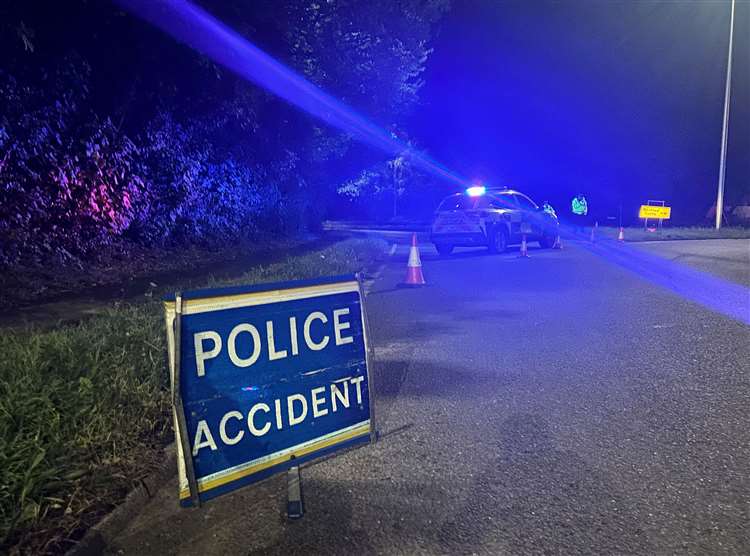
POLICE are appealing for information after a woman died following a collision in Tumble on Tuesday (Dec 2).
Officers were called to Heol y Neuadd at around 5:35pm after a collision involving a maroon Skoda and a pedestrian. The female pedestrian was taken to hospital but sadly died from her injuries.
Dyfed-Powys Police has launched a renewed appeal for witnesses, including anyone who may have dash-cam, CCTV footage, or any information that could help the investigation.
Investigators are urging anyone who was in the area at the time or who may have captured the vehicle or the pedestrian on camera shortly before the collision to get in touch. (Phone: 101 Quote reference: DP-20251202-259.)
News
Greyhound Bill faces fresh scrutiny as second committee raises “serious concerns”

THE PROHIBITION of Greyhound Racing (Wales) Bill has been heavily criticised for a second time in 24 hours after the Senedd’s Legislation, Justice and Constitution (LJC) Committee published a highly critical Stage 1 report yesterday.
The cross-party committee said the Welsh Government’s handling of the legislation had “in several respects, fallen short of the standard of good legislative practice that we would normally expect”.
Key concerns highlighted by the LJC Committee include:
- Introducing the Bill before all relevant impact assessments (including a full Regulatory Impact Assessment and Children’s Rights Impact Assessment) had been completed – a step it described as “poor legislative practice, particularly … where the Bill may impact on human rights”.
- Failure to publish a statement confirming the Bill’s compatibility with the European Convention on Human Rights (ECHR). The committee has recommended that Rural Affairs Minister Huw Irranca-Davies issue such a statement before the Stage 1 vote on 16 December.
- Inadequate public consultation, with the 2023 animal-licensing consultation deemed “not an appropriate substitute” for targeted engagement on the specific proposal to ban the sport.
The report follows Tuesday’s equally critical findings from the Culture, Communications, Welsh Language, Sport and International Relations Committee, which questioned the robustness of the evidence base and the accelerated legislative timetable.
Industry reaction Mark Bird, chief executive of the Greyhound Board of Great Britain (GBGB), described the two reports as leaving the Bill “in tatters”.
“Two consecutive cross-party Senedd committees have now condemned the Welsh Government’s failures in due diligence, consultation and human rights considerations and evidence gathering,” he said. “The case for a ban has been comprehensively undermined. The responsible path forward is stronger regulation of the single remaining track at Ystrad Mynach, not prohibition.”
Response from supporters of the Bill Luke Fletcher MS (Labour, South Wales West), who introduced the Member-proposed Bill, said he welcomed thorough scrutiny and remained confident the legislation could be improved at later stages.
“I have always said this Bill is about ending an outdated practice that causes unnecessary suffering to thousands of greyhounds every year,” Mr Fletcher said. “The committees have raised legitimate procedural points, and I look forward to working with the Welsh Government and colleagues across the Senedd to address those concerns while keeping the core aim of the Bill intact.”
A Welsh Government spokesperson said: “The Minister has noted the committees’ reports and will respond formally in due course. The government supports the principle of the Bill and believes a ban on greyhound racing is justified on animal welfare grounds. Work is ongoing to finalise the outstanding impact assessments and to ensure full compatibility with the ECHR.”
The Bill is scheduled for a Stage 1 debate and vote in plenary on Tuesday 16 December. Even if it passes that hurdle, it would still require significant amendment at Stages 2 and 3 to satisfy the committees’ recommendations.
-

 Crime3 days ago
Crime3 days agoDefendant denies using Sudocrem-covered finger to assault two-month-old baby
-

 News2 days ago
News2 days agoBaby C trial: Mother breaks down in tears in the witness box
-
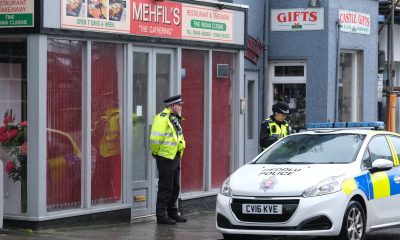
 Crime2 days ago
Crime2 days agoPembroke rape investigation dropped – one suspect now facing deportation
-

 Crime7 days ago
Crime7 days agoMan denies causing baby’s injuries as police interviews read to jury
-

 Crime3 days ago
Crime3 days agoLifeboat crew member forced to stand down after being assaulted at Milford pub
-

 Crime3 days ago
Crime3 days agoDefendant denies causing injuries to two-month-old baby
-
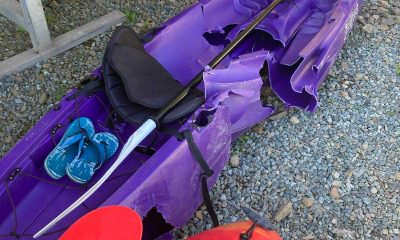
 Crime3 days ago
Crime3 days agoPembrokeshire haven master admits endangering life after speedboat collision
-
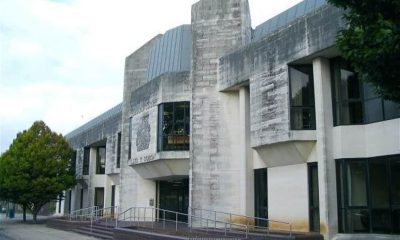
 Crime1 day ago
Crime1 day agoMother admits “terrible idea” to let new partner change her baby’s nappies alone










